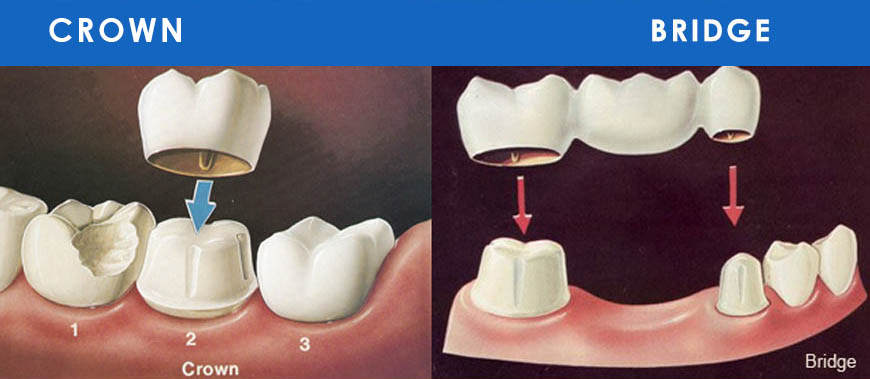
Thanks to medical advances, dental mishaps are reversible. Bridgework can be ideal for missing teeth while dental crowns are among the most viable and effective tools dentists apply today. For Richmond crowns and bridges, contact Juan M. Carrillo, DMD to get natural-looking bridgework and dental crowns.
What is a dental crown?
A dental crown is a cap with the shape of a tooth, which Dr. Carrillo can recommend for decayed, damaged, or broken teeth to restore its shape and function. A dental crown is cemented onto the tooth, covering the entire tooth above the gumline. However, installing a crown does not entail removing the root of the tooth.
When do I need a crown?
Dental crowns can come in handy in a variety of situations such as:
- Capping or supporting a tooth with a large filling
- Restoring a broken or worn-down tooth that is no longer functional
- Covering a dental implant
- Making cosmetic changes or covering a misshapen tooth
- Safeguarding a broken or decayed tooth from additional damage
Dental crowns can also be effective in supporting a dental bridge. This can be done by attaching crowns to healthy teeth on each side of the gap left by damaged or missing teeth.
What components make dental crowns?
Dental crowns can be manufactured from several materials. You are at liberty to choose which one you deem suitable for you. In children’s cases, stainless is a common temporary option across the board. Owing to metal’s durability, metal or porcelain-fused-to-metal crowns are also prominent.
You need not to worry if you are among the individuals who detest the color of these crowns or have metal allergies. You can find numerous non-metal options including zirconium, porcelain, and dental resin. Normally, Dr. Carrillo recommends one of the metal-free options, customized and created upon your initial visit.
What is a dental bridge?
If you are lacking one or more teeth, a bridge can help get rid of this gap, restoring your bite and smile. Dr. Carrillo installs crowns at the top on either side of the gap left by your missing tooth. These crowns support a false tooth or teeth in the middle. Crowns are made of alloy, gold, porcelain, or a combination of these elements.
Subject to the location of the bridge and health of surrounding teeth, it may only be bonded on either side, or supported by a wing of dental composite. Bridges may also be held firm by dental implants.
What happens when getting a crown or bridge?
Before installing a crown, Dr. Carrillo conducts an examination to determine which option – a crown or dental implant – best suits you. He begins by administering a general anesthetic to numb the target area. Afterwards he files the tooth to proper size and shape to adequately support a crown. Your crown is then constructed and cemented to your tooth permanently.
Dental bridges are normally conducted over numerous visits in a process similar to getting a crown. After taking an impression of the abutment teeth for proper fitting, you will receive a temporary bridge as your permanent ones are being forged.
If you are considering a crown or might be wondering if bridges are a suitable fit for you, call the office of Juan M. Carrillo, DMD or make your appointment online.